Know Thy History: The Yellow Kid

Surely you’ve heard of the phrase “yellow journalism.” It’s the sort of unprincipled journalism where little research is done, and its sole purpose is to sell newspapers. It’s first use happened way back in the 1890’s between two newspaper titans: Joseph Pulitzer of New York World (yes, that Joseph Pulitzer) and William Randolph Hearst of New York Journal. “Yellow journalism” was infamously applied to the Spanish-American War. Hearst and Pulitzer first drummed up anti-Spain sentiments with fabricated stories about brutality in Cuba. The two papers went into full crazy warmongering mode when the USS Maine exploded. To this day, no one really knows if the Spanish were responsible for the sinking of the USS Maine. (Wikipedia provides several competing studies: the latest, based on computer simulations conducted by the National Geographic in 1998, helps support the original theory that a Spanish mine did sink the Maine, while a 1974 naval study concludes that it was spontaneous combustion of coal in the bunker near the magazine. As always, everything is wrapped up in politics.)
But why was it called “yellow journalism” in the first place? It turns out Pulitzer and Hearst had been fighting another war at the same time: one in the funny pages. Each had their own version of the character known as The Yellow Kid. When the media wars erupted, the New York Press called it “yellow journalism.”
The term isn’t as directly tied to the Yellow Kid as previously thought (even Wikipedia makes this error, claiming that “yellow journalism” was shortened from “yellow kid journalism”). However, there IS a connection, as reported by Comic Book Resources. “Yellow journalism” referred more to the fancy new yellow ink that the new newspapers were playing with. That ink was most visually seen in a popular comic where a kid wore a loud yellow shirt. In addition, the editor of the New York Press who coined “yellow journalism” was totes mad with this newfangled trend his competitors were using of mixing comics with serious, honest news reporting… and this bald-headed interloper wasn’t making matters easy.
And that, people, is how one of the early superstars of comics got mixed up with the sinking of the USS Maine.
The Yellow Kid got his start in Richard Outcault’s comic, Hogan’s Alley. It was the Li’l Rascals before there were L’il Rascals: bunch of kids growing up in the turn-of-the-century tenements and saying things wise beyond their years like “Our rejuced means may temporary necessitate our residin’ in a rear tenement, but we’re jist as exclusive as when we lived on the first floor front and papa had charge of the pound in the Department of Canine Captivity!” Oh, the hilarity! The Yellow Kid was just one of many of the Hogan’s Alley gang, a weird bald kid who had no hair because that’s how they treated lice infections in the day.
Back when Hogan’s Alley was in glorious black and white, the Yellow Kid wasn’t yellow at all. And even with the advent of color, The Yellow Kid was wearing some dowdy grey shirt. Yellow ink didn’t dry well, so when it was used, it was used sparingly. However, once the newspapers hit on a new, fast drying yellow ink, The Yellow Kid got his famous new duds, and a star was born. Ah, man, don’t you miss the days when “fast-drying yellow ink” was the “Flash Animation” of new technologies?
So that’s why he’s The Yellow Kid. I thought that he was a racist caricature of an Asian American, but there doesn’t seem to be anything online to yet support this theory. I mean, other kids in Hogan’s Alley were drawn rather offensively, “yellow” is sort of associated with Asian skin color, and The Yellow Kid did dress the part for visiting Chinese dignitaries … but if you look at what’s written on the shirt in that last link you’ll notice that he implies he’s not from China, so there you go. So that’s that.
Speaking of shirts: The Yellow Kid didn’t speak much, but he had one of the most expressive shirts in the business. It even changed from panel to panel, doubling as The Yellow Kid’s dialogue. It was also a parody of turn-of-the-century advertising techniques, where people primarily advertised with quirky slogans printed on t-shirts. My, how things have changed.
The Yellow Kid was a mischievous prankster. He made Dennis the Menace and Bart Simpson look like Lambs of God. The Kid liked to get into cockfighting, gambling, smoking a fat stogie, and, most frightening of all, golfing. He also has ties to at least one secret society, and he has a thing for Faust.
On the plus side, dude knew how to style … for cheap! The Kid loved football and advocated proper ball-handling techniques. He also was kinda sweet on fellow young tenement dweller Liz. The Yellow Kid has been seen declaring his intent to marry her from time to time.
Anyway, back to the Pulitzer/Hearst newspaper wars. Hogan’s Alley first debuted in Pulitzer’s New York World. However, Hearst wanted in on some of that exciting Yellow Kid action. So, after offering Outcault a bucketload of cash, Outcault brought his art and his comic creation to New York Journal. Since Pulitzer still owned Hogan’s Alley, Outcault had to run his comic under a new name: McFadden’s Row of Flats. (Outcault even did a couple of cheekly strips where Hogan’s Alley is condemned, and the Yellow Kid leads the residents to their new locale.) Refusing to be defeated, Pulitzer hired George Luks to take over Hogan’s Alley with a brand-new, more painterly style. Eventually, both newspapers recognized The Yellow Kid as the real star, which is how both newspapers became associated with the “yellow” of “yellow journalism”.
The Yellow Kid was a merchandising powerhouse in his own right. Some have declared him the first commercially successful comic strip character (in America, anyway). The little dude showed up on wafer tins, dolls, ten pins, cigarette cases, cigar boxes, and Easter Egg candy containers. I’d say he was selling out to The Man, except that The Man (or The Men) in Big Newspaper was partially responsible for his meteoric rise in the first place.
So what killed the Yellow Kid? There are many theories. The most interesting one, posed by Booklist on an Amazon review, is that the Yellow Kid was killed by the Spanish American War. Just like how nowadays we’ve turned our backs on the French and started calling them fried potato sticks “freedom fries,” a curious thing happened after the Spanish American War: people just did not care for the color yellow. Because what was on the Spanish flag? Yellow. And what color is most associated with the Yellow Kid? Why that dirty Spanish sympathizer!!!
A more plausible theory is that the Yellow Kid, with his prankish ways and his affection for smokes and booze, got on the bad side of various parent groups. Or maybe The Yellow Kid couldn’t hold up to the huge influx of hot new newspaper strips influenced by The Yellow Kid. Wikipedia suggests that the Yellow Kid disappeared when the New York newspaper wars waned. Then there’s the possibility that Outcault just got lost interest with the character once he lost creative control.
Don’t worry about Outcault, though. He would soon be back on his feet with fresh weirdness going by the name of Buster Brown.
And the other players in The Yellow Kid saga? Joseph Pulitzer went on to found the Pulitzer Award, the highly respected U.S. award for achievements in newspaper and online journalism, literature and musical composition. Meanwhile, William Randolph Hearst had a huge friggin’ castle built in California and his life was immortalized in the “greatest movie of all time” Citizen Kane, while later his granddaughter got brainwashed and robbed banks for the Symbionese Liberation Army.
Wait, are you telling me Hearst was the real person and The Yellow Kid was the comic strip character? Yikes.
Images of The Yellow Kid courtesy of San Francisco Academy of Comic Art Collection, The Ohio State Univeristy Cartoon Research Library.
Posted on November 25, 2010, in comics, Know Thy History, The Webcomic Overlook and tagged The Yellow Kid. Bookmark the permalink. 10 Comments.


















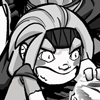


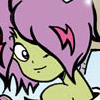




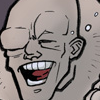
















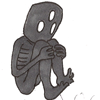





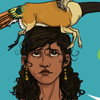





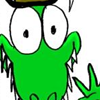


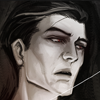




















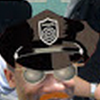





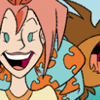
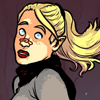


















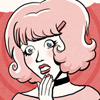
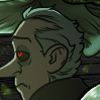


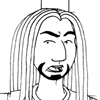


Great article Larry! Hope you had a good thanksgiving
SAY…the kid was Irish American, nuttin’ to do with Chinese. The yellow referred only to the nightshirt he always wore. His “real” name was Mickey Dugan
exactly.
Funny and very well documented. Thank you !
Great post. I had always thought, only having read one or two of the comics, that the Yellow Kid was anti-Chinese racism typical of its era. I mean, the guy is bald with buck teeth and tiny eyes, wears a robe, and is hard to understand. But this is entirely a misperception. You probably saw the remarks by Outcault in Wikipedia, but here they are: “The Yellow Kid was not an individual but a type. When I used to go about the slums on newspaper assignments I would encounter him often, wandering out of doorways or sitting down on dirty doorsteps. I always loved the Kid. He had a sweet character and a sunny disposition, and was generous to a fault. Malice, envy or selfishness were not traits of his, and he never lost his temper” (Richard F. Outcault, from a 1902 interview). The Yellow Kid was not a racist’s groteseque but a heroic child of the slums. Maybe he should be revived.
I never heard of this website before–I’m psyched to check out your other posts. Hope the site is still going!
Great article and very informative. I truly enjoyed it. Stumbled upon it while doing research about the Spanish American war for an article I wrote. Only one complaint, which has nothing to do with you, I’m sure: it seems the links that lead to OSU’s website (and there are several) don’t exist any more. It directs you to their site but says can’t find the subject. The old “This is somewhat embarrassing, isn’t it? We can’t seem to find what you are looking for.” It’s a real bummer. But again, I enjoyed your article. Thanks.
Pingback: Strip News 11-25-10 | Strip News | ArtPatient | ArtPatient
Pingback: Casualtest: Comic Workshop | GamezGeneration
Pingback: Politics in Comics: Part 1, A Brief History – Lvl41Rogue
Pingback: Politics in #Comics: Part 1 – A Brief History | Rachel McGill – The Black Lion Journal